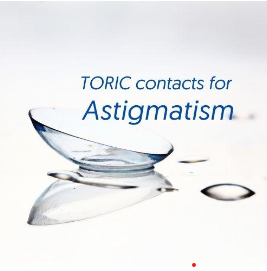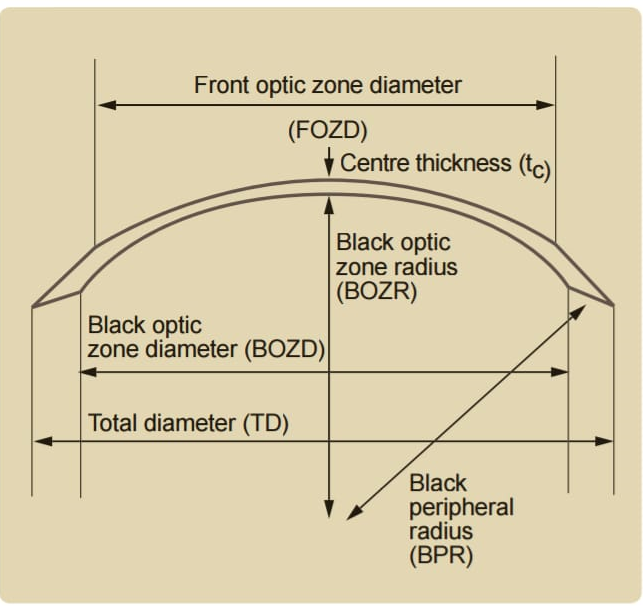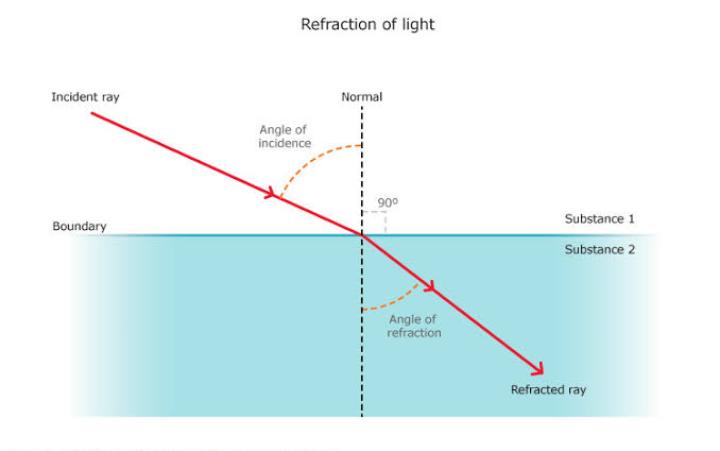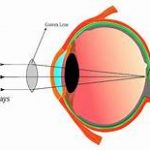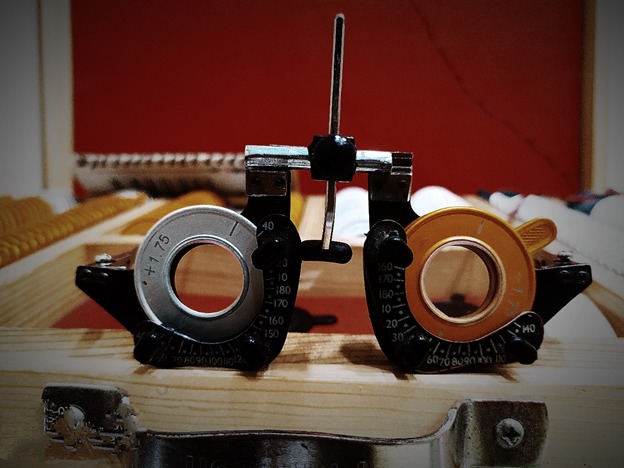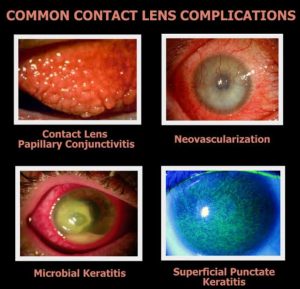Astigmatism is a type of refractive error where in the refraction varies in different meridian. Consequently ,the rays of light entering the eye cannot converge to a point focus but from focal lines. Broadly there are two types of astigmatism :- Irregular astigmatism and regular astigmatism
Regular Astigmatism :- when the refractive power changes uniformly from one meridian to another meridian.
Irregular Astigmatism :- Where the refractive power irregularly change in different meridian.
Astigmatism is not an uncommon condition . It can be corrected by both rigid and soft contact lenses.
RGP LENSES FOR ASTIGMATISM ;-
- Spherical RGP lens :- sometime optometrist suggest this lens to first fit the astigmatic wearer with a single vision lens , even if there is high corneal toricity. Corneal astigmatism as high as +4.00D has been reported to be corrected effectively with a single vision rigid lens in quite a few cases. It has been recommended in such case the lens should be made 0.2-0.3 mm smaller in diameter than the standard routine lens diameter.
- RGP lens with Toric peripheral curves :-This lens may be required in many patients with 1.5-2.5 D corneal astigmatism. In such patients , a spherical posterior surface lens may lift over the steepest corneal meridian. This may lead to poor lens centration or frequent lens loss.
The standard speripheral curves are used in flattest meridian , and in the steepest meridian in the peripheral curves are made sleeper by an amount equal to the dioptres of corneal astigmatism. The lenses are ordered in the usual fashion with the notation toric peripheral curves are made sleeper by n amount equal to the dioptres of corneal astigmatism . This lenses are ordered in the usual fashion with the notation toric peripheral curves and the dioptres of corneal astigmatism.
- Bitoric RGP lenses :- Toric posterior curve lens is often necessary to provide an adequate lens fit in patients in high degrees of corneal astigmatism, usually +2.5D or greater . Such a lens is usually fitted with posterior curves the same as the keratometric readings. However , when a lens with toric posterior curve is placed on the cornea, unlike a spherical posterior surface lens , the lens – tear interface becomes a toric surface with a resultant induced astigmatism. Thus, in most situations when a toric posterior curve is used, an additional anterior toric curve is used, an additional anterior toric curve will be needed to overcome the induced astigmatic error, such a lens is called bitoric lens.
- Front surface Toric RGP lens :- These lenses are required in patients having spherical corneas with significant astigmatism. Such an astigmatism is called residual astigmatism and it usually reflects the lenticular astigmatism . When a front toric lens is ordered for a spherical corneal surface , a special change in the shape of the contact lens is necessary to prevent it from rotating . This can be accomplished by the following methods.
A prism blast may be added to the lens in its manufracture. The amount of base down prism needed is usually 1.50 , al though more prism may be necessary to centre a high minus power lens.
The lens may be truncated ,i.e . diameter of the lens in one meridian is shortened by cutting off the entire edge of the lens by 0.5-1.0 mm . Truncation is usually used to modify an existing lens rather than as part of the initial lens design.
SOFT LENSES FOR ASTIGMATISM
- Spherical Soft contact lenses :- Spherical soft contact lenses may correct astigmatism of up to 1D , provided the total astigmatism is not more than one third of the spherical correction . for example a patient with – 5 DS and – 1 DC prescription may be comfortable when fitted with a spherical soft contact lens .
- Toric soft lens :- Toric soft lenses are required when astigmatism is more than 1 D and spherical soft contact lenses are not able to correct it, and the patient is unable to tolerate rigid lenses. Toric soft lenses have different radii of curvature in opposing 90 degree meridians.
READ MORE ARTICLE:
Frame as an impressive look changer
